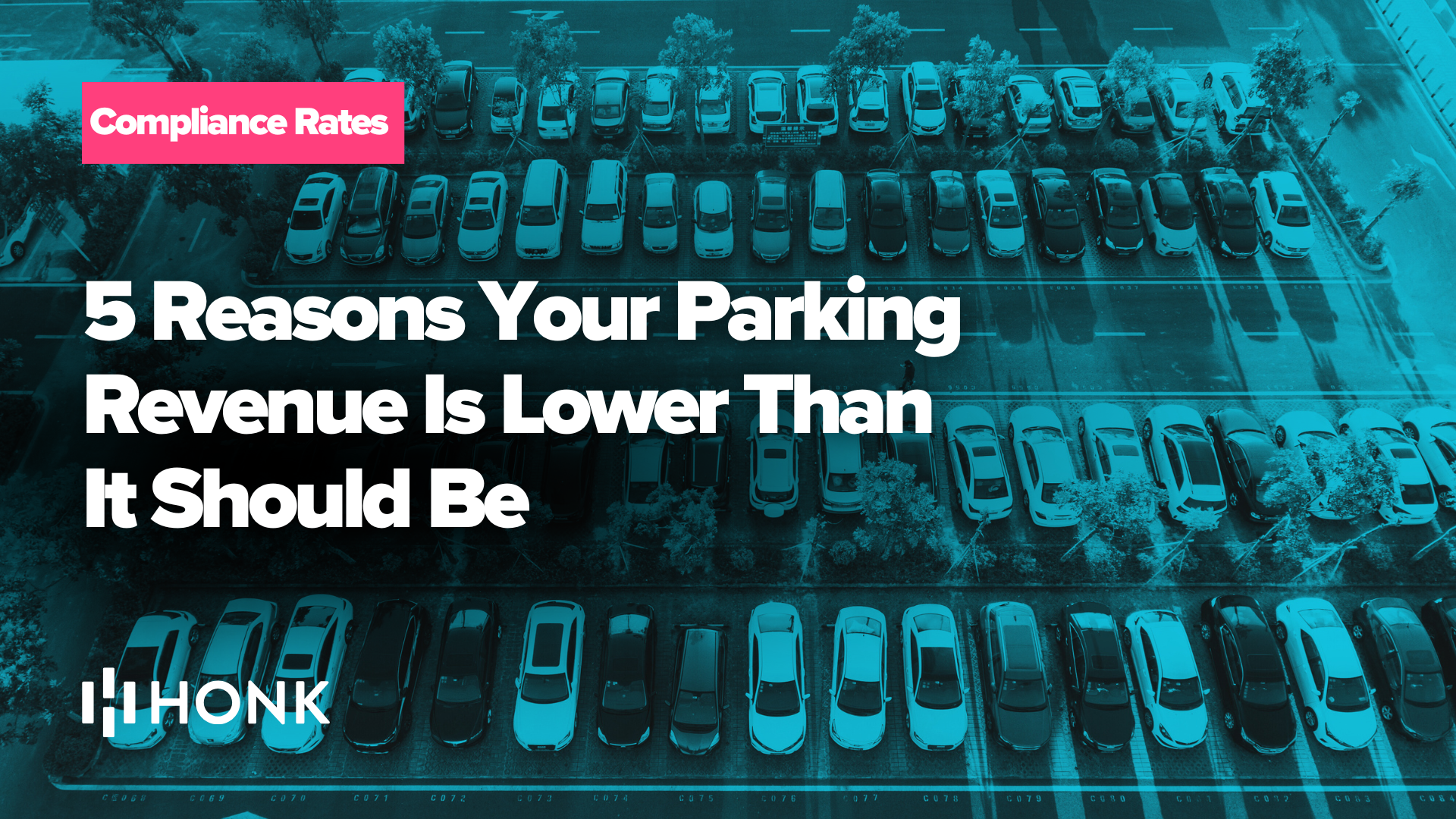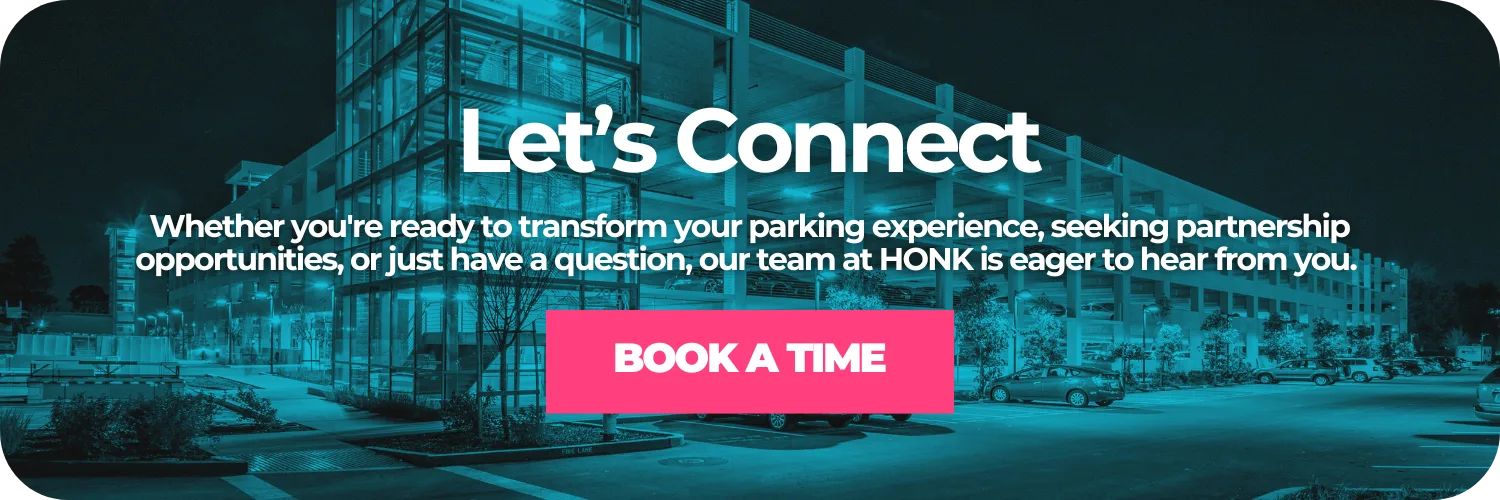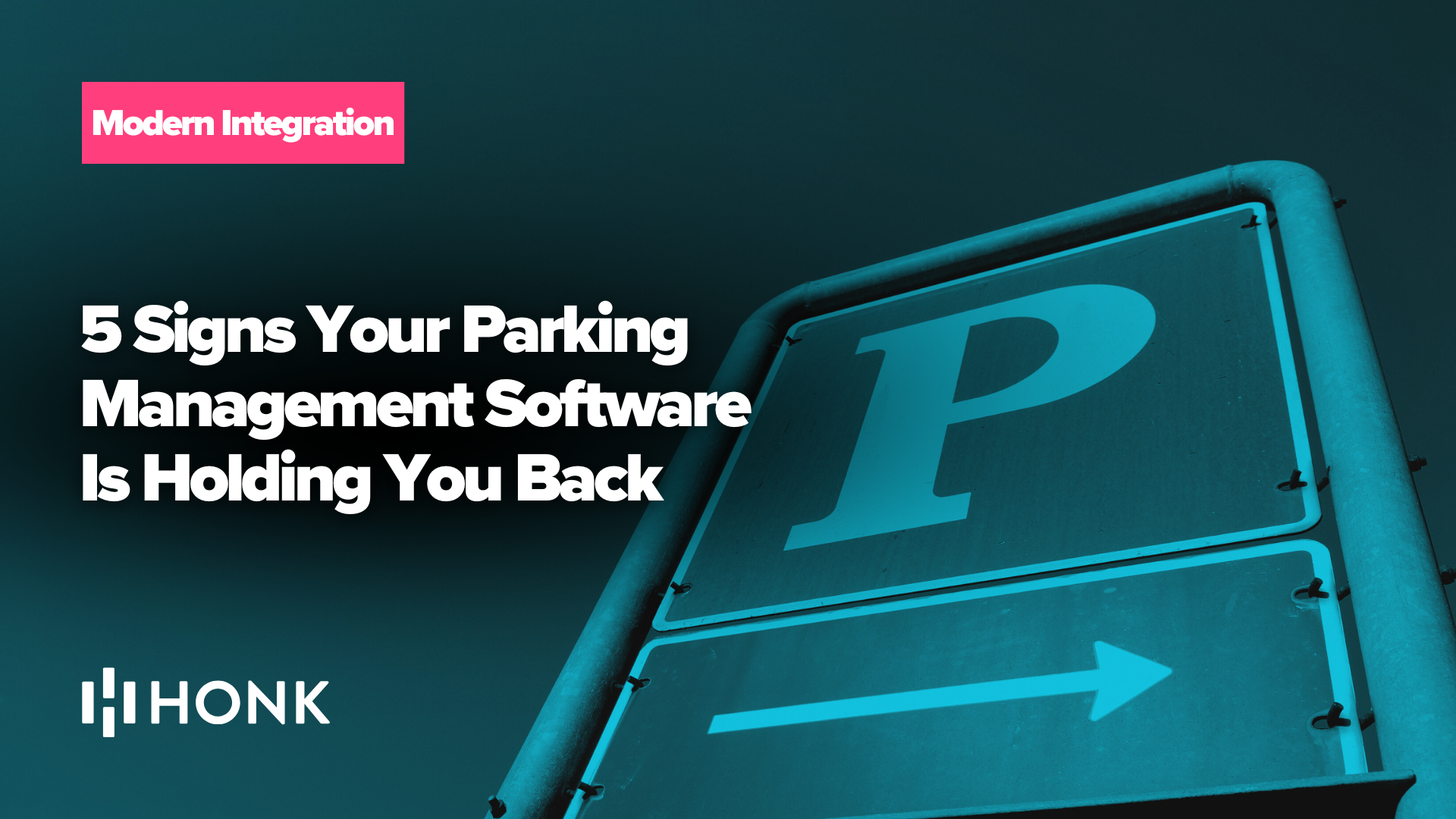Running a parking operation should be profitable. You have the spaces, you have the demand, and you’re charging fair rates. So why does it feel like you’re leaving money on the table? If your parking revenue hasn’t grown in line with your expectations, or if you’re constantly dealing with operational headaches that eat into your margins, you’re not alone. Many parking operators across North America are facing the same challenge. The good news is that most revenue loss comes from fixable problems that modern technology can solve.
At HONK, we work with hundreds of parking operators who’ve made the leap from legacy systems to modern, cloud-based solutions. Through these partnerships, we’ve identified five critical reasons why parking revenue falls short of its potential. If any of these sound familiar, it’s time to take a hard look at whether your current system is truly serving your bottom line or quietly bleeding money every single day.
1. Enforcement Gaps Are Costing You More Than You Think
Let’s start with the most obvious revenue killer. Enforcement gaps happen when your team can’t catch violations in real time, when manual processes create delays, or when there’s simply no efficient way to verify who’s paid and who hasn’t. The result? Drivers quickly figure out they can get away with not paying, and your compliance rates drop. This isn’t just an annoyance. It’s a direct hit to your revenue.
Consider the numbers. Cities like Los Angeles have struggled with enforcement inefficiencies for years. Over the past decade, LA’s parking enforcement division has accumulated more than $315 million in losses tied to managing its citation system. Even before factoring in the estimated $25 million annual cost of processing parking tickets, the division operates at a loss of over $40 million per year. That’s not because people aren’t parking. It’s because the system can’t effectively enforce payment and collect fines.
Now, you might not be managing a city-wide operation, but the principle scales down to any parking facility. When enforcement is manual, inconsistent, or slow, drivers learn they can dodge payment. Your team can’t be everywhere at once, and paper tickets or outdated meters don’t provide real-time visibility into who’s complying and who isn’t. Manual enforcement also means your staff wastes valuable time walking lots, checking plates against payment records, and dealing with disputes that could have been avoided with better data. Modern parking management systems change this equation entirely. With license plate recognition integrated into a cloud-based platform, enforcement becomes automated and accurate. Your system knows instantly which vehicles have paid, which permits are valid, and which cars are in violation. Enforcement officers receive real-time alerts and can head straight to the vehicle’s location with image evidence already in hand. This level of precision eliminates guesswork, reduces false citations, and most importantly, increases compliance because drivers know they can’t get away with skipping payment.
The financial impact is real. Operators who’ve modernized their enforcement report seeing compliance rates jump significantly simply because the technology closes the gaps that used to let non-payers slip through. When people know they’ll get caught, they pay. It’s that simple. If your current system relies on manual checks or outdated equipment, you’re losing revenue every single day to enforcement gaps you probably don’t even realize exist.
2. Outdated Payment Methods Are Driving Customers Away
Here’s a question worth asking. When was the last time you paid for something with coins? If you’re like most people, the answer is probably never, unless you were forced to by an aging parking meter. Today’s drivers expect payment to be as easy as buying coffee or calling a ride. They want to tap their phone, scan a QR code, or use a contactless card. They don’t want to dig through their car for loose change or stand in line at a pay station that might be out of service.
When you force customers to use outdated payment methods, you’re not just creating friction. You’re actively losing revenue. Some drivers will simply leave and park elsewhere if they don’t have cash. Others will try to game the system or “forget” to pay because the process is too cumbersome. Research shows that 80% of drivers prefer digital payment options when available, and over 50% of all in-person transactions in the U.S. are now contactless. The parking industry can’t afford to lag behind these expectations.
Cash-based systems also come with hidden costs that eat into your profits. You have to collect the cash, count it, transport it to the bank, and deal with theft or vandalism. Coin mechanisms jam. Bill acceptors malfunction. Meters get damaged. All of this requires maintenance, staff time, and replacement costs that add up quickly. On top of that, cash handling creates opportunities for revenue leakage through human error, shrinkage, or outright fraud. When everything is manual, there’s no reliable audit trail to tell you exactly how much money should be there versus how much actually is. Switching to contactless parking technology eliminates all of these problems. Digital payments are faster, more convenient, and completely auditable. Every transaction is logged in real time, creating a transparent record that protects both you and your customers. There’s no cash to collect, no meters to service, and no guessing about where your revenue went. Operators who’ve made the switch report reducing labor costs by 20 to 30% simply by eliminating cash handling and the staff time required to manage it.
More importantly, digital payments improve the customer experience, which directly impacts compliance and turnover. When paying is easy, people actually do it. When they can extend their session remotely or get a reminder before their time expires, they don’t overstay or risk a ticket. The result is higher revenue per space and a smoother operation overall. If you’re still relying on coins and paper tickets, you’re not just behind the times. You’re giving your customers a reason to park somewhere else.
3. No Dynamic Pricing Means You’re Leaving Money on the Table
Static pricing is one of the biggest missed opportunities in parking management. If you’re charging the same rate at 2 PM on a Wednesday as you do during a sold-out concert on Saturday night, you’re either overcharging when demand is low or undercharging when demand is high. Either way, you’re losing revenue. Dynamic pricing allows you to adjust rates based on real-time demand, time of day, or event schedules, ensuring you capture maximum value from every parking space.
Think about how other industries handle pricing. Hotels charge more during peak season. Airlines adjust fares based on demand. Rideshare apps surge pricing during rush hour. Parking should work the same way. When your lot is nearly full, raising the price encourages turnover and ensures you’re getting top dollar for those last few spaces. When you have excess capacity during off-peak times, lowering the price attracts more customers and keeps your lot from sitting empty. The goal is to match pricing to occupancy, maximizing revenue per space across all conditions.
Real-time data makes dynamic pricing possible, and that’s where modern parking management software excels. With cloud-based platforms, you get live visibility into occupancy, usage patterns, and parking behavior across your entire operation. You can analyze which times and zones have the highest demand, test different price points, and automate rate adjustments so they happen instantly without manual intervention. Operators using data-driven parking strategies have seen revenue increases of 20% or more without adding a single new parking space. That’s pure profit unlocked by smarter pricing.
San Francisco’s SFpark program is a great example of dynamic pricing in action. By using sensors and variable pricing to balance parking supply and demand, the city increased occupancy from 25% to 85% in some garages while still boosting total revenue. They also reduced the time drivers spent searching for parking by 43%, which cut congestion and improved the overall experience. When pricing reflects reality instead of guesswork, everyone wins. Drivers find spots faster, operators maximize revenue, and the system runs more efficiently.
If your current software doesn’t support dynamic pricing, you’re stuck with a one-size-fits-all approach that guarantees you’re either underpricing during peak times or scaring away customers during slow periods. Modern parking management tools from providers like HONK give you full control over time-based pricing, event rates, early bird specials, and zone-based differentiation. Changes reflect instantly in mobile apps and digital signage, so your customers always know what they’re paying and why. This level of flexibility is essential for competing in today’s market and capturing the revenue your spaces can actually generate.
4. Poor Data Visibility Is Keeping You in the Dark
You can’t manage what you can’t measure. If your parking operation relies on gut instinct, infrequent manual counts, or outdated spreadsheets, you’re flying blind. You don’t know which spaces are underutilized, which times have the highest demand, or where you’re losing money to inefficiencies. Without real-time data, you’re constantly reacting instead of planning. You’re making decisions based on guesses instead of facts. And you’re missing opportunities to optimize your operation because you simply don’t have the information you need.
Traditional cash-based systems give you almost no insight beyond daily totals. You know roughly how much money came in, but you have no idea when it came in, from which zones, for how long, or from which types of customers. That lack of granularity makes it impossible to spot patterns, identify problems, or test improvements. Modern cloud-based parking management platforms flip this entirely. Every payment, every session, and every vehicle interaction generates data that’s captured automatically and available in real time through a centralized dashboard.
With proper data visibility, you can answer critical business questions that directly impact revenue. Which days and times have the highest occupancy? Are certain zones consistently underused? How long do customers typically stay? Are you overselling permits without realizing it? Which payment methods do customers prefer? All of this information lives in your system, and you can access it instantly from anywhere. More importantly, you can use it to make data-driven decisions that improve both operations and profitability. Real-time analytics also support better forecasting and long-term planning. Instead of relying on last year’s numbers or rough estimates, you can pull actual usage data broken down by hour, zone, or customer type. This intelligence helps you allocate resources more effectively, adjust staffing during peak periods, and identify where to invest in facility upgrades or reconfigurations. Some operators have even used occupancy data to safely oversell permit parking by 10 to 20%, increasing revenue without frustrating customers because the data showed there was room to spare.
Enforcement becomes more efficient with data visibility too. Your team can see exactly where violations are happening in real time and respond immediately. They’re not wasting time checking every space manually. They’re getting alerts and heading straight to problem areas with the information they need to issue accurate citations. This precision reduces disputes, improves compliance, and makes your enforcement dollars go further. If you’re operating without real-time data, you’re leaving money on the table simply because you can’t see where the opportunities and problems actually are.
5. Manual Processes Are Eating Your Time and Budget
Labor costs are one of the biggest expenses in parking operations, and manual processes amplify those costs unnecessarily. If your staff is spending hours collecting cash, counting coins, reconciling reports, issuing paper permits, or manually checking license plates, you’re paying for inefficiency. Every manual step takes time, introduces the possibility of human error, and pulls your team away from higher-value tasks like customer service or strategic planning. Automation can eliminate most of these manual processes, freeing up both time and budget.
Let’s talk about cash handling specifically. Between collecting money from meters, transporting it securely, counting and reconciling it, and dealing with bank fees, the cost adds up fast. You also have to account for shrinkage, theft, and vandalism. Cash boxes are targets, and coin mechanisms fail regularly. All of this requires maintenance staff, security measures, and replacement parts that drain your budget. Operators who’ve gone fully digital report saving 20 to 30% on labor costs simply by eliminating cash from the equation. There’s no money to collect, no coins to count, and no armored car service to pay for.
Manual permit management is another common drain. If customers have to come to your office to apply for permits, wait for paper hang tags to be printed, and then display them visibly in their vehicles, you’re creating unnecessary friction and administrative burden. Digital permit systems streamline the entire process. Customers can apply online, pay instantly, and receive their permit electronically. Your system automatically validates permits via license plate recognition, so there’s nothing to print, mail, or display. This saves your staff countless hours and makes the experience seamless for customers. Reporting and reconciliation are also major time sinks when done manually. If your team has to export data from multiple systems, manually compile spreadsheets, and format reports for stakeholders, that’s hours of work every week that could be automated. Cloud-based parking management platforms handle all of this for you. Automated reporting delivers daily summaries, performance metrics, and financial reports directly to your inbox on a schedule you set. Everything is accurate, consistent, and ready to share with leadership or partners without any manual effort.
The broader point here is that manual processes don’t scale. As your operation grows, adding more locations or more spaces, manual workflows become even more cumbersome and expensive. Automation scales effortlessly. Whether you manage five lots or fifty, a cloud-based platform handles it all from one centralized dashboard. You can monitor every facility in real time, adjust pricing across multiple locations simultaneously, and generate unified reports that give you a complete picture of your business. This level of efficiency simply isn’t possible with manual processes, and the financial impact shows up directly in your bottom line.
Time to Stop Leaving Money on the Table
If you recognize even one of these five problems in your operation, you’re almost certainly losing revenue that you could be capturing. Enforcement gaps let non-payers slip through. Outdated payment methods drive customers away and create unnecessary costs. Static pricing leaves money on the table during peak times and scares customers away during slow periods. Poor data visibility keeps you in the dark about where opportunities and problems actually exist. And manual processes eat up time and budget that could be invested in growth.
The parking industry is evolving quickly, and operators who embrace modern, cloud-based technology are seeing real results. They’re capturing more revenue per space, reducing operational costs, improving customer satisfaction, and making smarter decisions backed by real-time data. The technology exists today to solve all five of these problems, and the return on investment is clear.
At HONK, we’ve built a platform specifically designed to address these challenges. From digital payments and contactless access to automated enforcement, dynamic pricing, and real-time analytics, we help parking operators modernize their operations and unlock revenue they didn’t know they were missing. Whether you manage a single lot or a network of facilities across multiple cities, our cloud-based solution scales to meet your needs.
If you’re tired of watching revenue slip through the cracks and dealing with outdated systems that create more problems than they solve, it’s time to make a change. The longer you wait, the more money you’re leaving on the table. Contact HONK today to schedule a demo and discover how easy it is to transform your parking operation into a modern, profitable, data-driven business.





